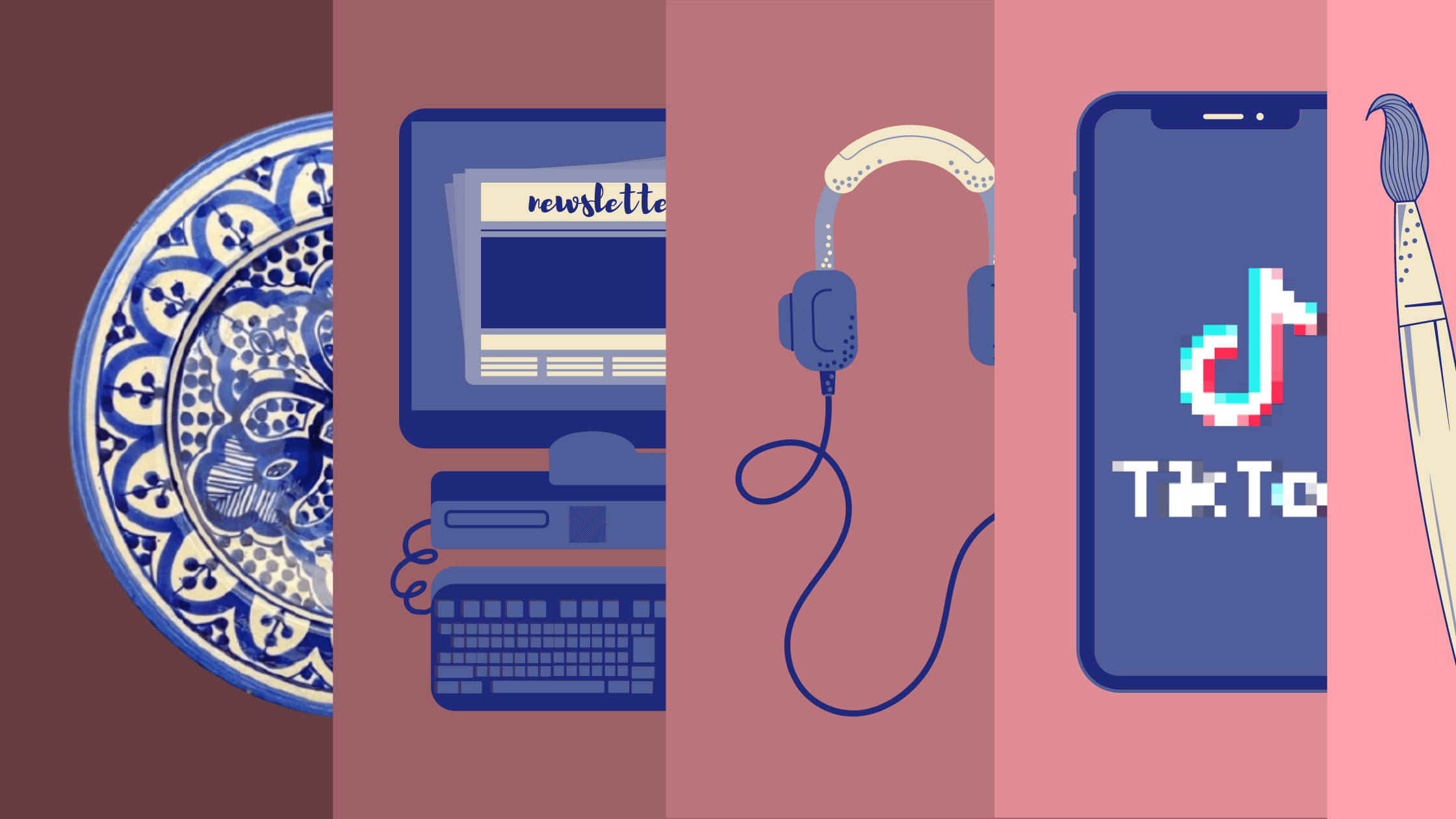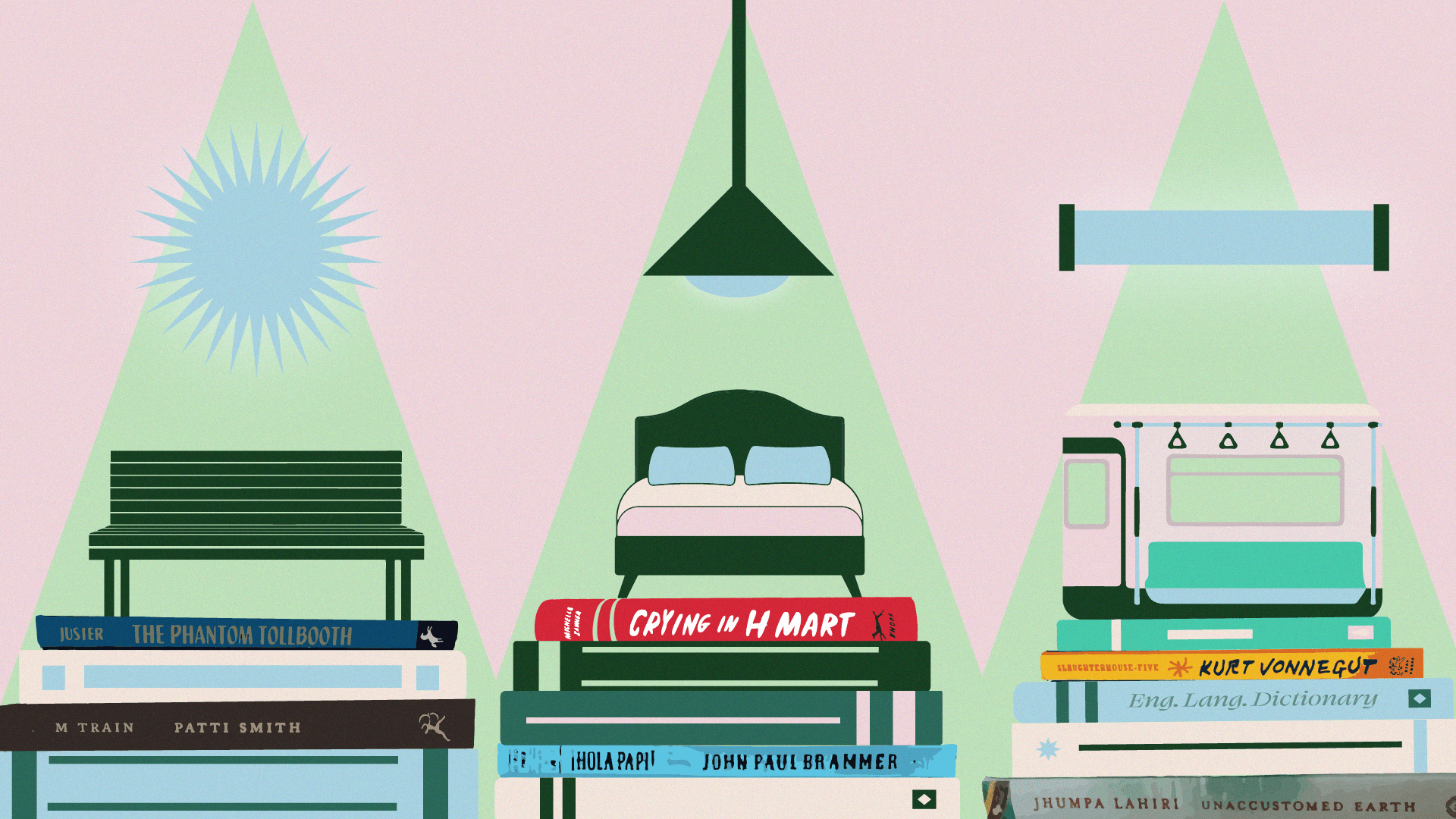
The Side Hustle Arms Race
Everyone’s a creator these days.
Who among us did not start a pandemic podcast? If not a podcast, then it was a newsletter or an online Etsy store. Perhaps you launched a Patreon or promoted your pop-up restaurant on Instagram. The pandemic-induced economic crisis intensified financial anxieties for those affected, particularly women and people of color, effectively killing for them the idea of having hobbies for leisure. The pressure to commodify and formalize one’s passions for money, personal brand, or external legitimacy can be overwhelming. Because of the recession, if you don’t have a side hustle these days, it can feel like you’re behind.
Nearly four in 10 people in the U.S. pursue some sort of side hustle, and during the pandemic, nearly every platform geared toward content creators saw downloads skyrocket, from Substack to Cameo to Twitch to Patreon. Content creators produce media to engage and entertain viewers or promote a brand. Although the creator economy has grown exponentially over the past few years, its benefits have accrued unequally. Harvard Business Review calls this phenomenon the “missing creator middle class,” pointing out that most platforms are dominated by a few very successful creators who can influence platforms to benefit them while most others struggle to monetize their content in any meaningful way. Although it is increasingly difficult to differentiate oneself in a world where it seems like everyone is a founder, creator, or entrepreneur in their spare time, side hustlers persevere anyway, propelled by a number of different motives.
Ego can certainly play a motivating role. Every content creator (myself included as a freelance journalist) must audaciously believe they are special if they are to hold onto the hope of future success. However, the definition of success varies by creator. Some do it for money, some out of passion, and some to enhance their primary career.
Although the majority of creators do not make a living solely from their content, supplemental income is also a very common motivator for pursuing a side hustle. A November 2019 survey by Morning Consult found that 86% of Gen Z and millennials would post sponsored content for money. An influencer with a reach of 15,000 followers could make an average of $457 per sponsored post, and creators with larger follower counts can make thousands of dollars per post. However, the study also noted that most millennial creators were primarily motivated by money while most Gen Z creators were motivated by the opportunity to share their ideas with a large audience.
There’s also a gender gap in motives — a majority of women rely on their side hustle to cover their regular living expenses compared to a minority of men. The pandemic has also taken a disproportionate economic toll on women, to the point that some economists have dubbed its effects the “shecession.” With female unemployment hitting double digits this year for the first time since 1948, more women feel pressure to monetize their hobbies and passions to make ends meet.
Librarian Carolina Cooney has long relied on her side hustle to help sustain her financially. Cooney founded Silver Sahara, an online Moroccan store selling handmade artisanal goods, after a trip to the country in 2016. She works 40 hours a week at her day job to meet her expensive living costs in Martha’s Vineyard, where she moved to take care of her aging grandmother. She supplements her income with money she makes from Silver Sahara. Cooney also sends a large portion of those profits back to the artisans in Morocco, reinvesting in local communities there.
“Where I live, having one job is not enough. It’s sort of a joke here that unless you have three jobs, you’re not even working,” Cooney said. “Martha’s Vineyard is a side hustle paradise. It seems like such a resort community and so much money comes in, but for those of us who live here year-round, it’s a struggle to maintain the very, very high cost of living.”
Cooney describes Silver Sahara, which she operates with her partner who lives in Morocco, as a “one-woman show” when it comes to the website and e-commerce strategy. While she dreams of turning the business into her full-time gig, high rents in Martha’s Vineyard make opening a retail location difficult, and she sometimes feels spread thin by the demands of holding two jobs.
“I feel like I’m constantly tinkering with my strategy. But then I also never really have enough time to focus on my strategy or on the website or any of it because I do have the regular 40-hour-a-week day job,” Cooney said.
Despite the demanding nature of her side hustle, Cooney admits that passion and individualism still play a huge role in motivating her to persist. When asked if she would consider a more lucrative side hustle for which she doesn’t have a passion, she said she would not feel fulfilled. She has considered dropshipping, which entails starting an online business to sell products to buyers purchased from a third party. Because of its flexibility, it is a popular side hustle for those looking to make a quick buck.
“People have approached me to do dropshipping, and I don’t want to do that,” Cooney said. “It’s very impersonal. I don’t think there’s a lot of integrity involved in it. You have no idea unless you are familiar with the product, and you’re dropshipping something that you personally have vetted.”
While Cooney’s job as a librarian still provides her primary source of income, some creators have managed to turn their side hustles into full-time roles. Gigi Robinson, a chronic illness and body image advocate, pursued content creation as a side hustle in addition to being a full-time student at the University of Southern California. She has now turned her former side hustle into a full-time role, running her own one-woman creative agency. Robinson’s agency works with brands to provide content including photography assets, custom videos and speaking engagements all based on her unique personal brand.
After a summer interning at Viacom and years of balancing social media with schoolwork, Robinson, 22, realized that she did not want to pursue a traditional career path.
“I was burnt out and I didn’t enjoy what I was doing every day, even though I had to do it,” Robinson said. “Once I got to that point, I did realize content creation was maybe something I wanted to do full time, and I’m just going to have to sacrifice either my happiness and my mental sanity to work in the corporate world, or I can bust my butt to do what I want and create meaningful artwork and meaningful writing that hopefully will change the world in a better way.”
Robinson began seeing traction from her work even while she was in college, saying she was able to pay off all her undergraduate loans with profit she made from her individual brand deals. She attributes her success to her authenticity and says that her confidence in her content’s uniqueness makes her immune to the pressure of a saturated market.
“I truly think what separates a lot of the clout-chasing kind of people from the real content creators ultimately comes down to their intention and their authenticity in that context. And I feel like that’s honestly something I’ve nailed down pretty well,” Robinson said.
While Robinson has figured out how to stand out in the crowded creator economy well enough to work in it full-time, she still feels pressure stemming from this success. She emphasized the difficulty in walking the line between being authentic in her content creation and maintaining her personal privacy and agency.
“Obviously, there are some things I don’t fully explain. And there has to be an end somewhere — you have to compartmentalize,” Robinson said.
Many in the media industry understand the dilemma of increasingly blurred lines between their personal and professional lives. Cultivating a loyal personal following in content creation can often translate to higher pay. Freelance writing, for example, is increasingly commonplace and may perhaps become the industry norm. By 2026, the number of employed reporters and correspondents will decline by 10% while the number of freelance writers will grow by 8%, according to The Bureau of Labor Statistics. Even journalists who don’t make money from their social content or don’t like putting themselves out there may feel pressured to commodify themselves and mine their own lives for content to share with the world, thus building a personal brand — whatever that means in the oversaturated internet of 2021.
Terry Nguyen, a reporter at Vox’s “The Goods,” writes two newsletters outside of her day job: a private newsletter on Asian girl culture and a cultural newsletter on Gen Z called “Gen Yeet.” While Nguyen’s newsletters are currently free, she is motivated to create content because of what she describes as a “big emphasis on reporters having their own brand.” She does not currently see herself pursuing freelancing full-time because of the demands of being one’s own brand manager and accountant in addition to creating content. While she prefers the security of full-time work as an anchor to her side hustles, she believes the media industry is trending away from permanent employment.
“I think everyone should have the freedom to make money off of their craft,” Nguyen said. “As someone who grew up reading and understanding the news ecosystem and something that was very magazine-dominated and newspaper-dominated, it does make me a little sad to see that decline. But we don’t really know how that’s going to pan out in ten years.”
Nguyen recognizes the benefits of writing newsletters outside of her full-time job both to her personal brand as a journalist and as a potentially monetizable pursuit in the future.
“I think allowing people — potential employers, or even subscribers who might one day fund my employment — see that other side of me is extremely beneficial,” Nguyen said.“It shows flexibility, and also variety in writing.
When everyone with a corporate job is also a content creator, are we all just going to subscribe to each others’ newsletters and listen to each others’ podcasts and buy each others’ handmade goods in a virtuous cycle of support? That is the optimistic view. On the flip side, perhaps consumers will become fatigued as every platform attempts to monetize creative output and differentiation becomes even less attainable.
Internet inequality could create a ‘1%’ of content creators and an underclass of have-nots unable to wield the algorithms in their favor. Nguyen has written in Gen Yeet about the potential for the creator economy to perpetuate pay disparities in creative fields.
“I think it’s important to point out how structural pay disparities won’t be eliminated even as more people seek self-employment,” Nguyen said. “As buzzy as the phrase ‘creator economy’ sounds, it’s ultimately a construct of labor — how someone works and earns income. Income generated by these platforms is often accumulated by the top 1% or 5% of creators — this is true of Substack and OnlyFans.”
The pressures that come with holding multiple jobs are even more salient for the self-employed, who often need to spend a lot of time trying to cut through the noise of the internet. Nguyen believes platforms can proactively address some of this pressure.
“Certainly, there are many smaller creators who make a decent living on these platforms, but more often than not, that’s not their sole income stream. For writers, they’re often writing books, freelancing, maybe even doing some copywriting on the side,” Nguyen said. “Because subscriptions are personality-driven, there should be more attention as to how these creator economy apps can selectively choose to boost and embrace their smaller creators.”


